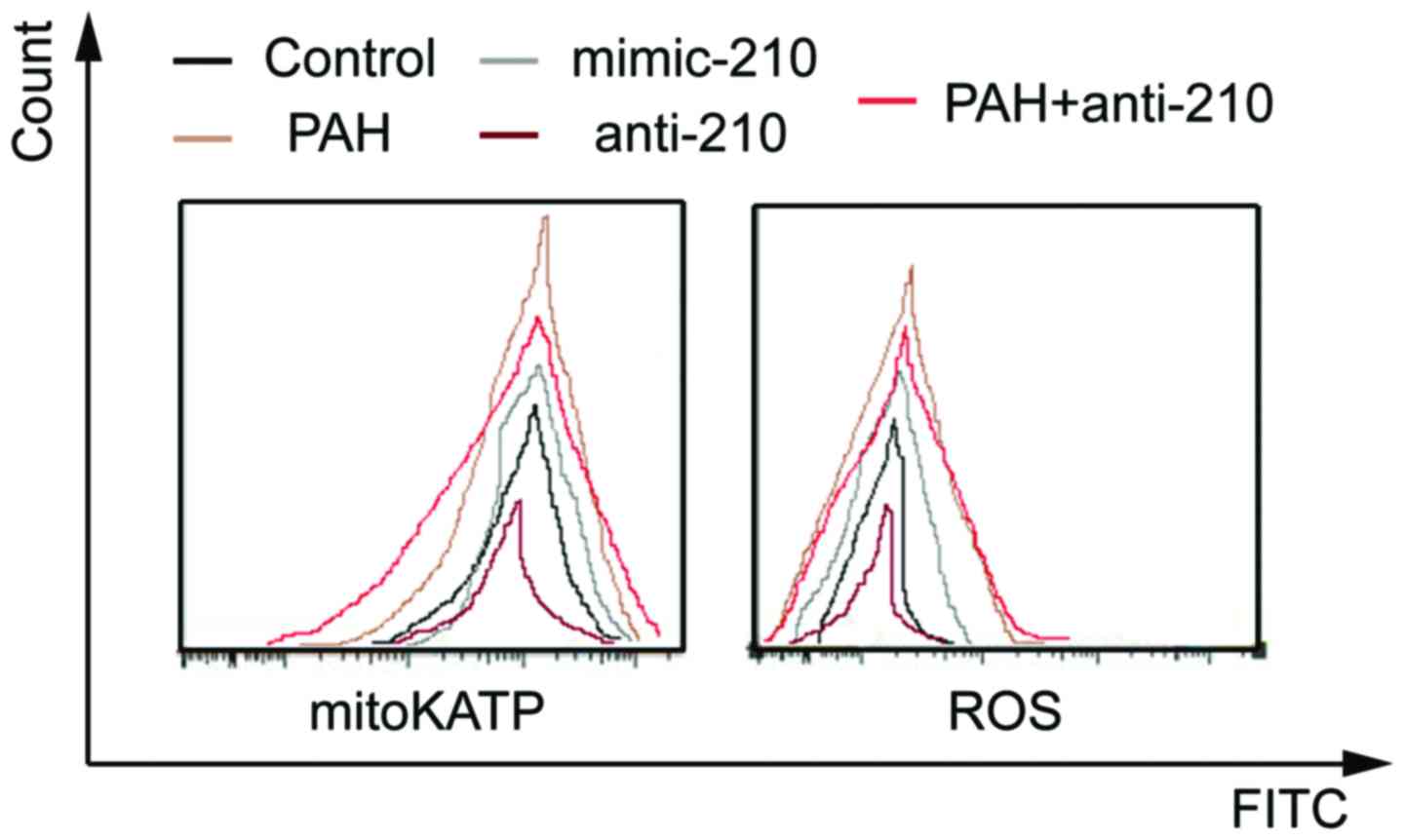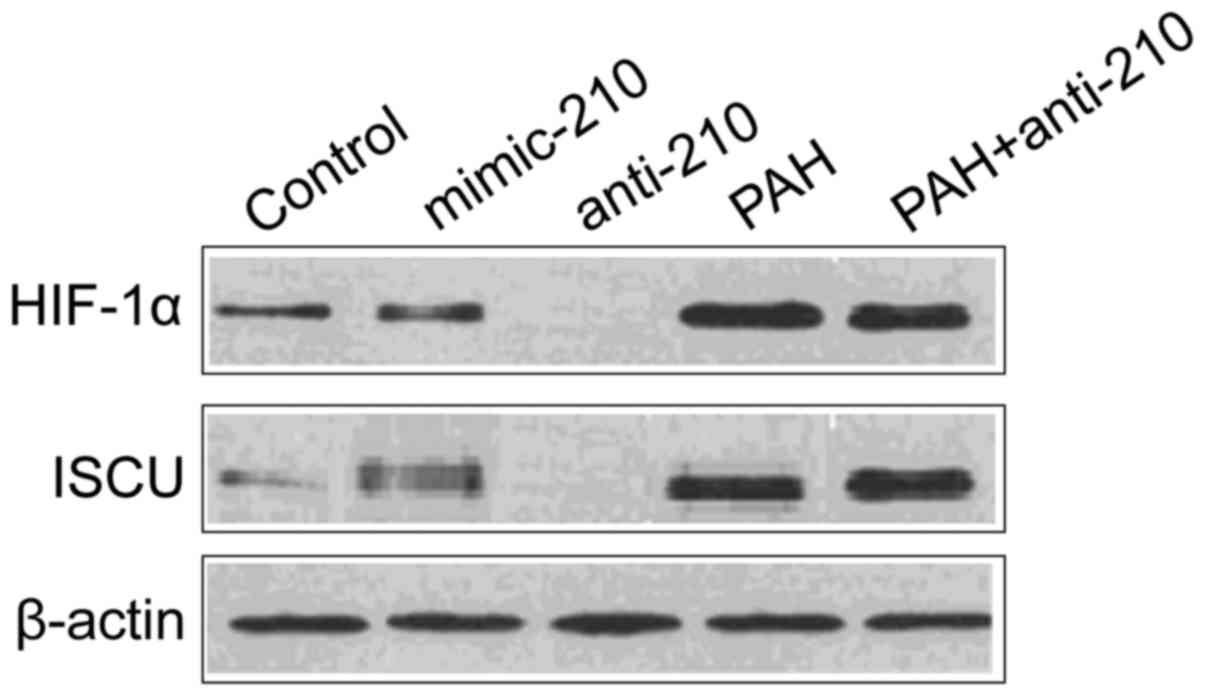MitoKATP regulating HIF/miR210/ISCU signaling axis and formation of a positive feedback loop in chronic hypoxia-induced PAH rat model
- Authors:
- Published online on: February 23, 2017 https://doi.org/10.3892/etm.2017.4161
- Pages: 1697-1701
-
Copyright: © Lu et al. This is an open access article distributed under the terms of Creative Commons Attribution License.
Metrics: Total
Views: 0 (Spandidos Publications: | PMC Statistics: )
Total PDF Downloads: 0 (Spandidos Publications: | PMC Statistics: )
Abstract
In the present study, we studied the mechanism of mitochondrial ATP-sensitive potassium (mitoKATP) channels regulating hypoxia-inducible factor (HIF)-1α/microRNA (miR)-210/mitochondrial iron‑sulfur protein integrin (ISCU) signaling axis and forming a positive feedback loop in chronic hypoxia‑induced pulmonary arterial hypertension (PAH) by using in vivo animal model. Two hundred healthy adult SPF Sprague‑Dawley rats were randomly divided into five groups: Control, a mimic miR-210 agent (mimic‑210) intervention, a miR-210 inhibitor (anti‑210) intervention, a chronic PAH and an anti‑210 intervention PAH groups, with 40 rats in each group. After the chronic PAH rat model was successfully established, the rats were intervened with mimic‑210 and anti‑210. The pulmonary artery smooth muscle cells (PASMCs) of rats in each group were acutely isolated and the activity of mitoKATP and mitochondria‑derived oxygen free radicals reactive oxygen species (ROS) was detected. RT-qPCR was used to detect the gene of HIF-1α/miR-210/ISCU and western blot analysis was used to detect the protein of HIF-1α and ISCU. The gene and protein expression were detected again after mitoKATP-specific opener diazoxide and blocker 5-HD was given via tail vein and took effect on each group of rats, respectively. Additionally, the indicators were detected again after ISCU recombinant protein was given via tail vein and ISCU small interfering RNA (siRNA) via nasal feeding and took effect on each group of rats, respectively. It was found that the activity of mitoKATP and ROS and the gene and protein levels of HIF-1α/miR-210/ISCU of the mimic-210 group were significantly higher than those of the control group while that of the anti-210 group was significantly reduced (P<0.05). The indicators in the chronic PAH group were significantly higher than those of the control group while those of the anti-210 intervention PAH group were significantly reduced (P<0.05). The indicators of all the groups were increased after being given mitoKATP specific opener diazoxide. The indicators of all the groups were significantly reduced after receiving blocker 5-HD (P<0.05). The indicators of all the groups were significantly reduced after given ISCU recombinant protein. The indicators of all the groups increased following ISCU siRNA, and there was a statistically significant difference (P<0.05). In conclusion, the mechanism of mitoKATP regulating the HIF-1α/miR-210/ISCU signaling axis and formation of a positive feedback loop exists in the PAH rat model.












